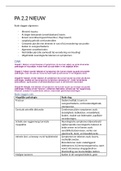Samenvatting
Summary OBFM Assessment
- Vak
- Instelling
Highly detailed summary of the content for all the OBFM Assessment lectures. Includes work from lecture slides, textbook/reading annotations and external research where further explanation was needed.
[Meer zien]









